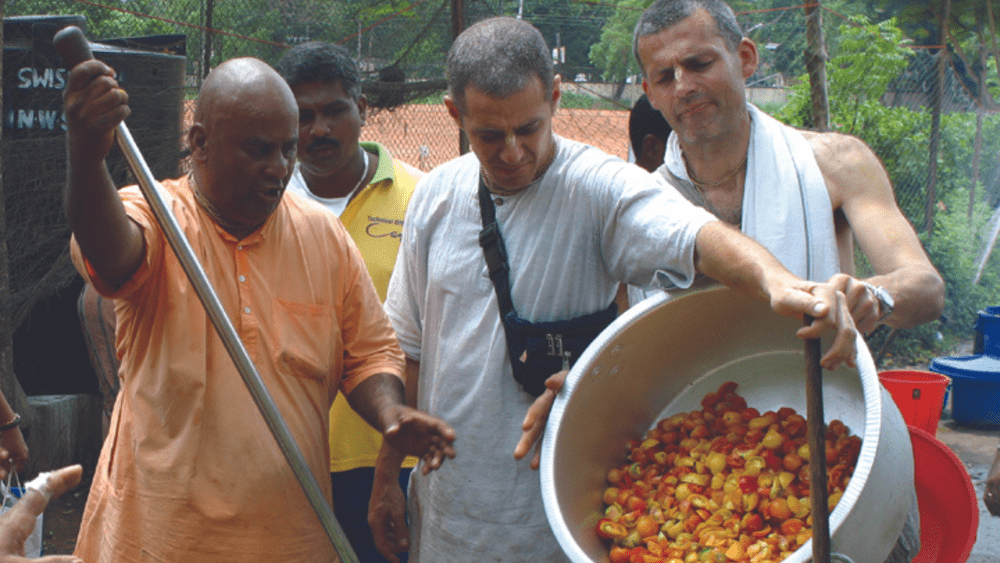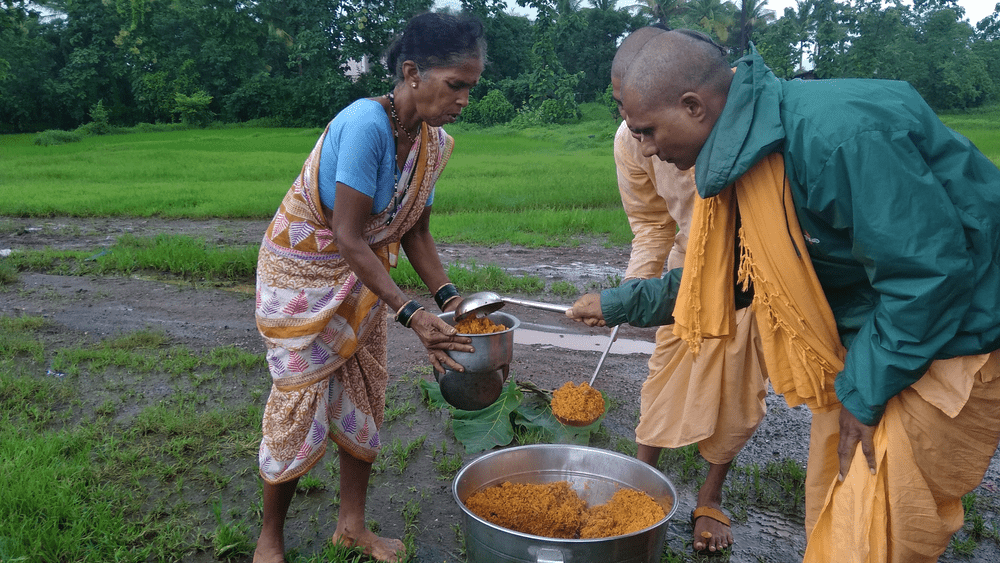World hunger refers to the persistent lack of access to enough food for an active, healthy life. According to the United Nations, around 795 million people suffer from chronic undernourishment, which is caused by a complex web of factors including poverty, lack of access to education, and political instability.
Climate change, war, and displacement also play a role in exacerbating the issue.
Veganism, or the practice of avoiding the use of animal product, has been proposed as a potential solution to world hunger due to the resources required to produce animal-based foods.
Animal agriculture requires more land, water, and other resources to produce food compared to plant-based agriculture, which means that more foods can be produced per acre of land with a plant-based diet.
Additionally, a significant amount of food is wasted in the production of animal product, and reducing the demand for animal products could lead to more food being available for human consumption.
Adopting a vegan diet also has the potential to create jobs and improve the economy in the farming and food production sectors, by increasing the demand for vegan foods.
However, it’s important to note that veganism alone is not a solution to end world hunger, it’s one of the ways to address it.
Other actions such as investing in sustainable agriculture, increasing food storage and distribution, addressing poverty and political instability, and reducing food waste are crucial to effectively addressing this complex issue.
Veganism can help end world hunger in a few ways:
Increased food efficiency
Plant based diet are generally considered more resource-efficient than diets that include meat.
According to some estimates, it takes around 20 times more land, water, and other resources to produce a kilogram of beef compared to a kilogram of wheat.
Additionally, it takes around 7 kilograms of grain to produce 1 kilogram of beef, while the same amount of grain could feed several people directly.
So, by reducing the demand for animal products, more land, water, and other resources can be freed up to grow food for human consumption, which could help to feed more people with the same resources.
Additionally, it’s important to note that switching to plant-based diets alone is not a solution to end world hunger, it’s an important aspect of addressing it, and it should be accompanied by other actions such as investing in sustainable agriculture, increasing food storage and distribution, addressing poverty and political instability, and reducing food waste.
Reduced food waste
A significant amount of food that is grown for animal consumption is wasted throughout the process of producing animal products.
For example, a large portion of the grain and soybeans grown for animal feed is wasted due to poor storage and transportation infrastructure, pest and weather damage, and other factors.
Additionally, a significant amount of food is wasted during the process of producing meat, dairy, and eggs, as these products have a shorter shelf life than many plant-based foods.
By reducing the demand for animal products, there would be less food wasted throughout the process of producing these products, and more resources available to feed people.
It’s also worth noting that reducing food waste is an important aspect of addressing world hunger, as it is estimated that around one-third of the food produced globally is wasted, that could feed millions of people.
Reducing food waste, improving food storage and distribution, and investing in sustainable agriculture are all important steps that can help to end world hunger.
Distribution of plant-based foods
A significant portion of the food grown globally is used to feed animals, rather than people. By reducing the demand for animal based foods, less food would need to be used to feed animals, and more food could be distributed to people in need.
This is especially true in developing countries, where a large portion of the food grown is used to feed animals that are raised for export, rather than to feed the local population.
By redirecting some of this food to feed people, instead of animals, it would be possible to help alleviate hunger and malnutrition in these countries.
It’s important to note that adopting a vegan diet is not the only way to achieve this, other actions such as, investing in sustainable agriculture, increasing food storage and distribution, addressing poverty and political instability, and reducing food waste are also crucial to effectively addressing this complex issue.
Additionally, it’s worth noting that food distribution is a complex issue and it involves many factors such as lack of infrastructure, war, political instability, etc. So, it’s not a simple task and it can’t be solved by just one approach.
Economic benefits
As more people adopt veganism, the demand for plant-based foods will increase, which can create jobs and improve the economy in the farming and food production sectors.
This can be especially beneficial in developing countries, where a large portion of the population is engaged in small-scale farming, and where a shift to plant-based foods could help to create new economic opportunities and improve the overall economic situation.
Additionally, as the demand for plant-based food increases, it could lead to an increase in jobs in the food processing, packaging, and distribution sectors.
It’s worth noting that the shift towards plant-based foods is a global trend and it’s not limited to veganism, as more people are choosing to include plant-based meals in their diet, this is driving the growth of the vegan foods sector and creating jobs and economic opportunities.
It’s also important to note that economic benefits are not limited to the food production sector, they also extend to other sectors such as health and environment.
Plant-based diets are associated with lower rates of chronic diseases and lower environmental impact, which can lead to long-term savings on healthcare costs, and a more sustainable future.
However, it is important to note that Veganism alone is not a solution to end world hunger, it is one of the ways to address it.
Other actions such as investing in sustainable agriculture, increasing food storage and distribution, addressing poverty and political instability, and reducing food waste are crucial to effectively addressing this complex issue.
In order to effectively address world hunger, a multifaceted approach is needed that addresses the underlying causes of the problem, such as poverty, lack of access to education, and political instability.
Additionally, sustainable agricultural practices, such as agroforestry, crop rotation, and reducing food waste, must be implemented to increase food production and reduce the environmental impact of food production.
It is important to note that addressing world hunger requires a multifaceted approach that addresses underlying causes such as poverty, lack of access to education, and political instability.
Organizations such as Food for Life Global play a crucial role in providing food to those in need by distributing vegan food, providing food aid and addressing the root causes of hunger.
They also educate communities on sustainable agriculture practices, and provide education and training to improve the livelihoods of people in vulnerable communities.
In addition to providing food aid, organizations such as Food for Life Global work to empower communities through sustainable agriculture, education and micro-finance programs.
By addressing the root causes of hunger and providing education and resources, they work to create sustainable solutions that will help to end world hunger.
It’s also important to note that food waste is a major issue that contributes to world hunger. It’s estimated that one third of food produced globally is wasted.
Organizations such as Food for Life Global work to reduce food waste by recovering surplus food from grocers, restaurants and other sources and redistributing it to those in need.
What can you donate to help alleviate world hunger?
Donating to reputable charities is one way to help alleviate hunger and malnutrition around the world. Here are a few ways you can donate to help fight hunger:
Make a financial donation
It’s important to remember that organizations such as Food for Life Global rely on financial donations to fund their programs and operations.
Donating money to these organizations can help them provide food aid, education and training, and sustainable solutions to those in need.
There are many ways to make a donation such as:
- 1. Online donations through the organization’s website
- 2. Sending a check or money order by mail
- 3. Setting up a recurring donation through automatic bank transfers
- 4. Participating in fundraising events or campaigns organized by the organization
Donate food
Donating food is another way to support organizations working to end world hunger.
Many organizations accept non-perishable plant-based food donations, which can be distributed to people in need.
These donations can help supplement the food aid provided by the organization and make a significant impact on the lives of those who receive it.
Some non-perishable plant based food items that can be donated include:
- 1. Canned goods such as beans, lentils, and chickpeas
- 2. Dried pasta, rice, brown rice
- 3. Nut butters, nuts and seeds
- 4. Canned or dried fruits and vegetables
- 5. Whole grains, such as quinoa and oats
- 6. Non-dairy milk alternatives such as soy, almond, or oat milk
Donating food is a great way to support organizations working to end world hunger, and can help to provide vital resources to those in need.
It’s a simple yet powerful way to make a difference in the lives of people suffering from hunger and to support organizations that work to create a more equitable and sustainable food system.
Donate to a specific program
Many organizations allow you to donate to specific programs, such as school feeding programs or emergency food assistance.
This can help you to ensure that your donation is being used to support a cause that is important to you.
For example, school feeding programs provide meals to children in schools, which can help to improve their health and well-being, and increase their ability to learn.
Emergency food assistance programs provide food aid to people affected by natural disasters or other emergencies.
Donate goods and services
Some organizations accept donations of goods and services, such as vehicles, or professional services.
Donating a vehicle or other transportation can help organizations to deliver food aid, medical supplies, and other assistance to people in remote areas.
This type of donation can be particularly useful for organizations that work in rural areas, where access to transportation is limited.
Leave a legacy gift:
You can also help to end hunger by leaving a legacy gift to a hunger-fighting organization in your will.
there are many ways to help end world hunger, and adopting a vegan diets can be one of them. Veganism can help to increase food efficiency, reduce food waste, and distribute food more equitably.
However, it’s important to note that veganism alone is not a solution to end world hunger.
A multifaceted approach is needed, including addressing poverty and political instability, investing in sustainable agriculture, increasing food storage and distribution, and reducing food waste.
Donating to organizations that work to combat hunger is also an important way to support this cause.
There are many ways to donate, such as financial donations, donating food, donating to a specific program, or donating goods and services.
Each type of donation can make a significant impact and help to support organizations in their efforts to end world hunger.
By supporting these organizations, we can all make a difference in the lives of people suffering from hunger and help to create a more equitable and sustainable food system.








